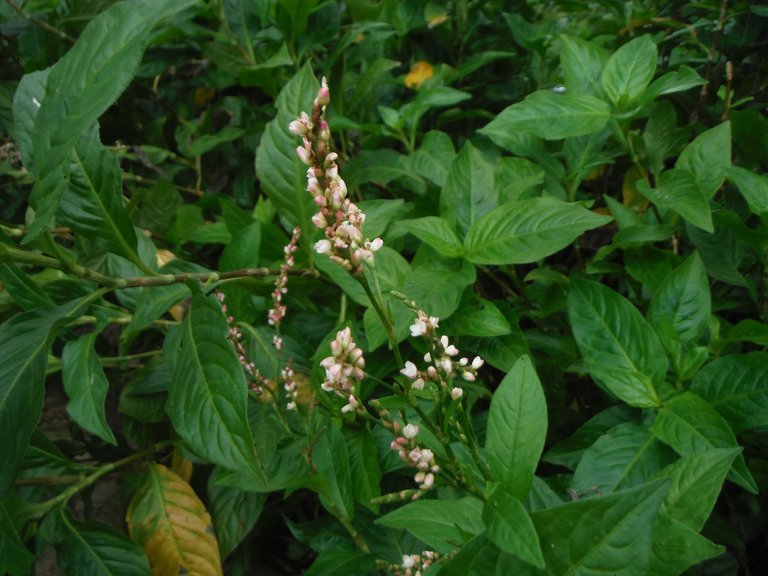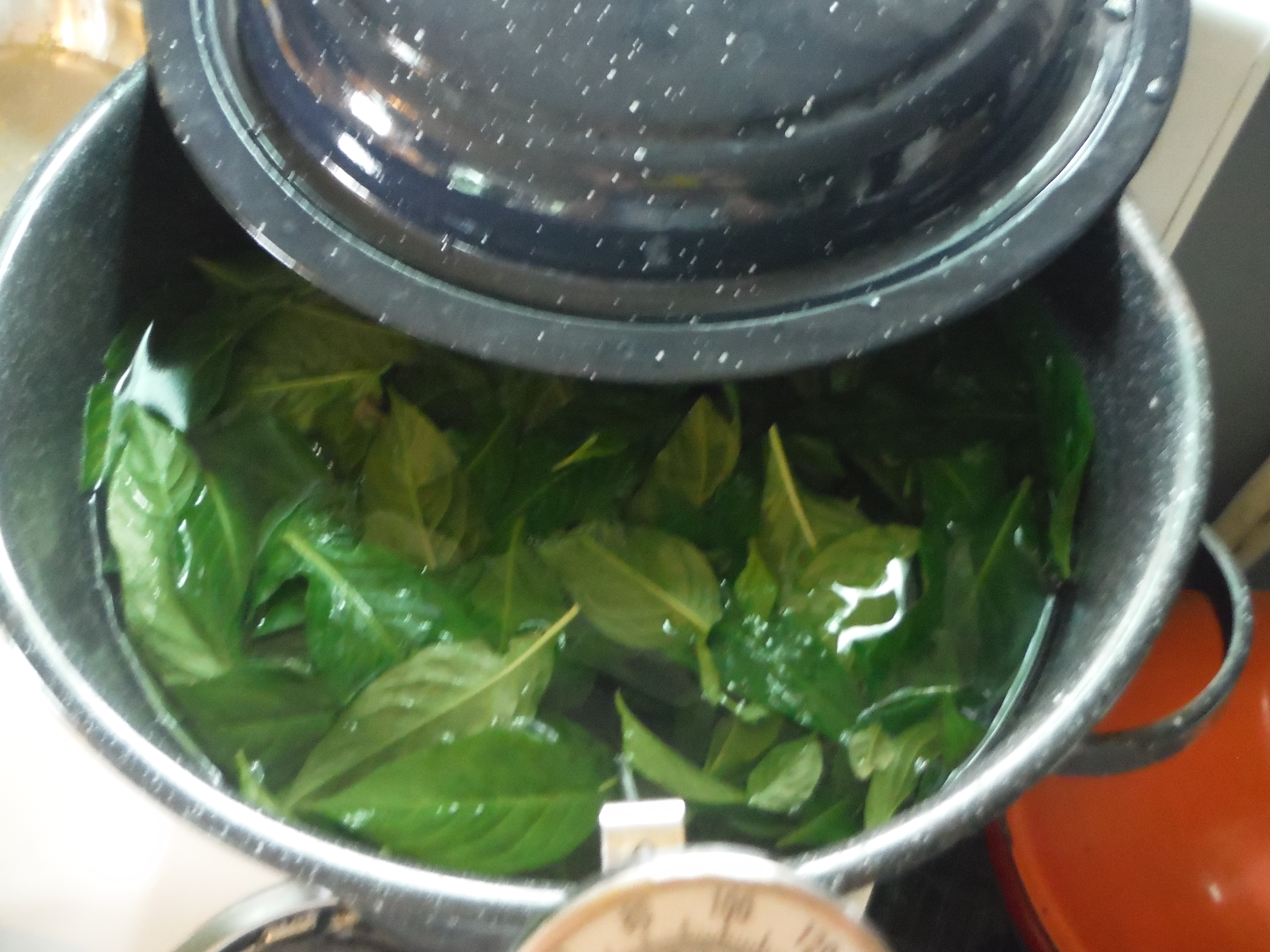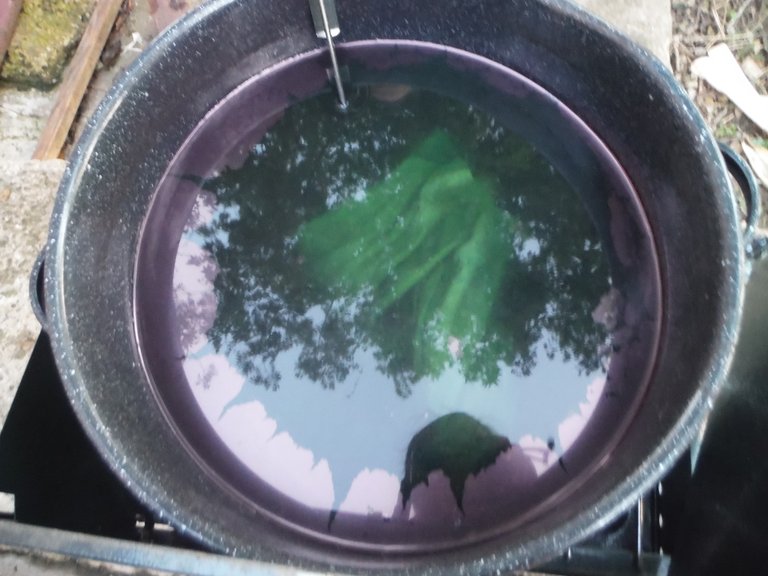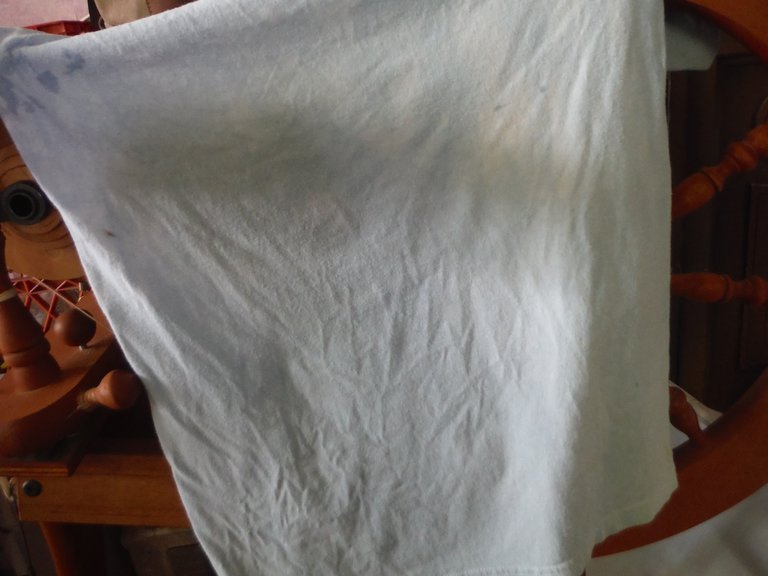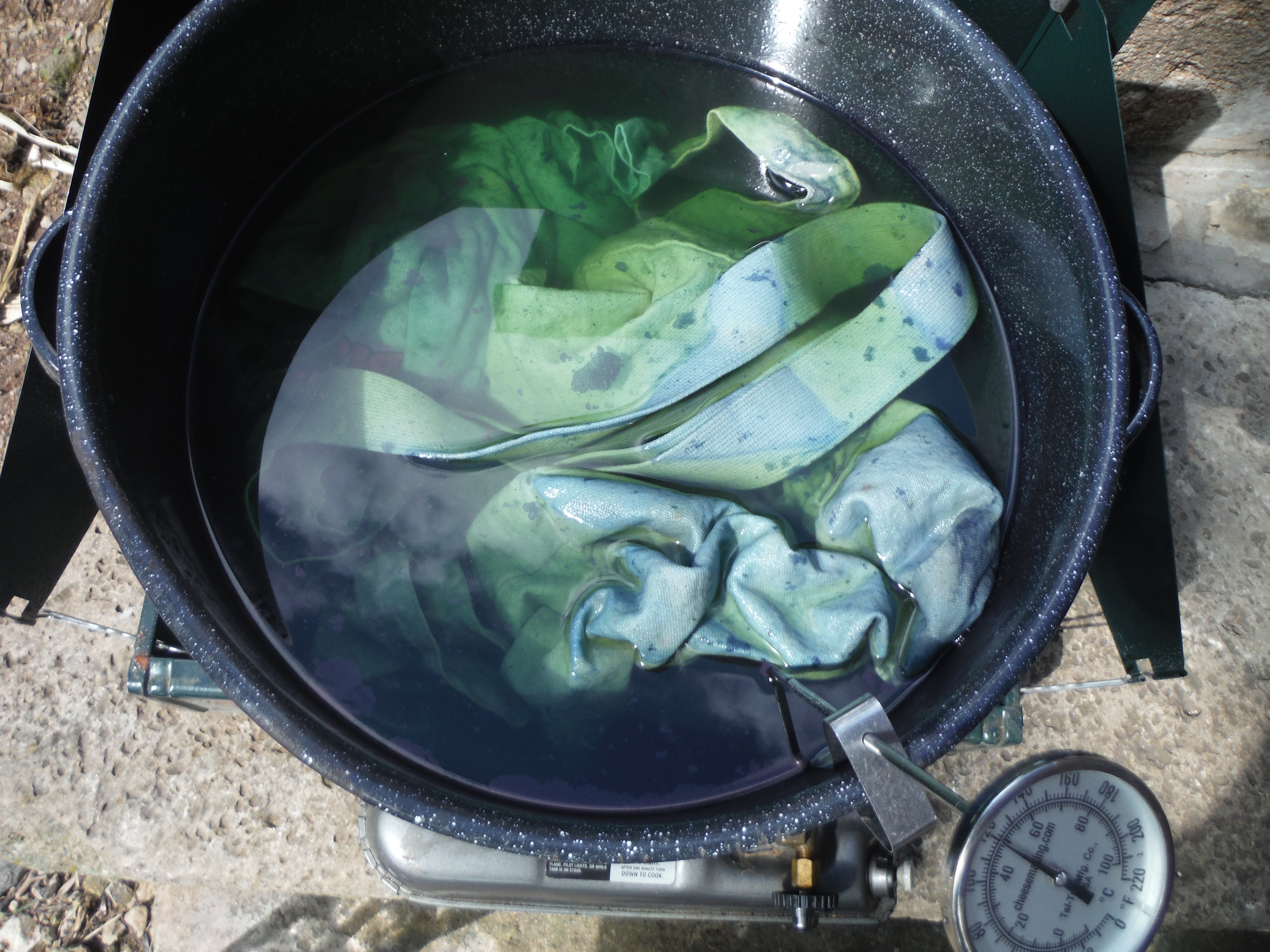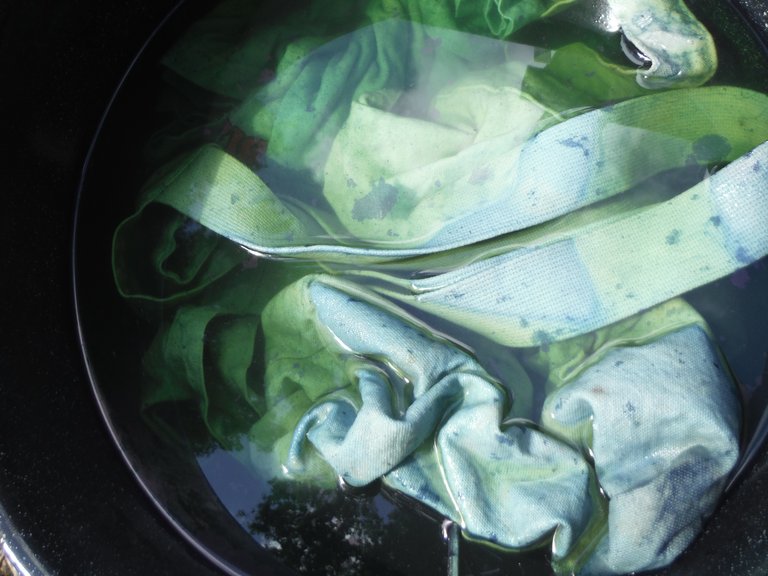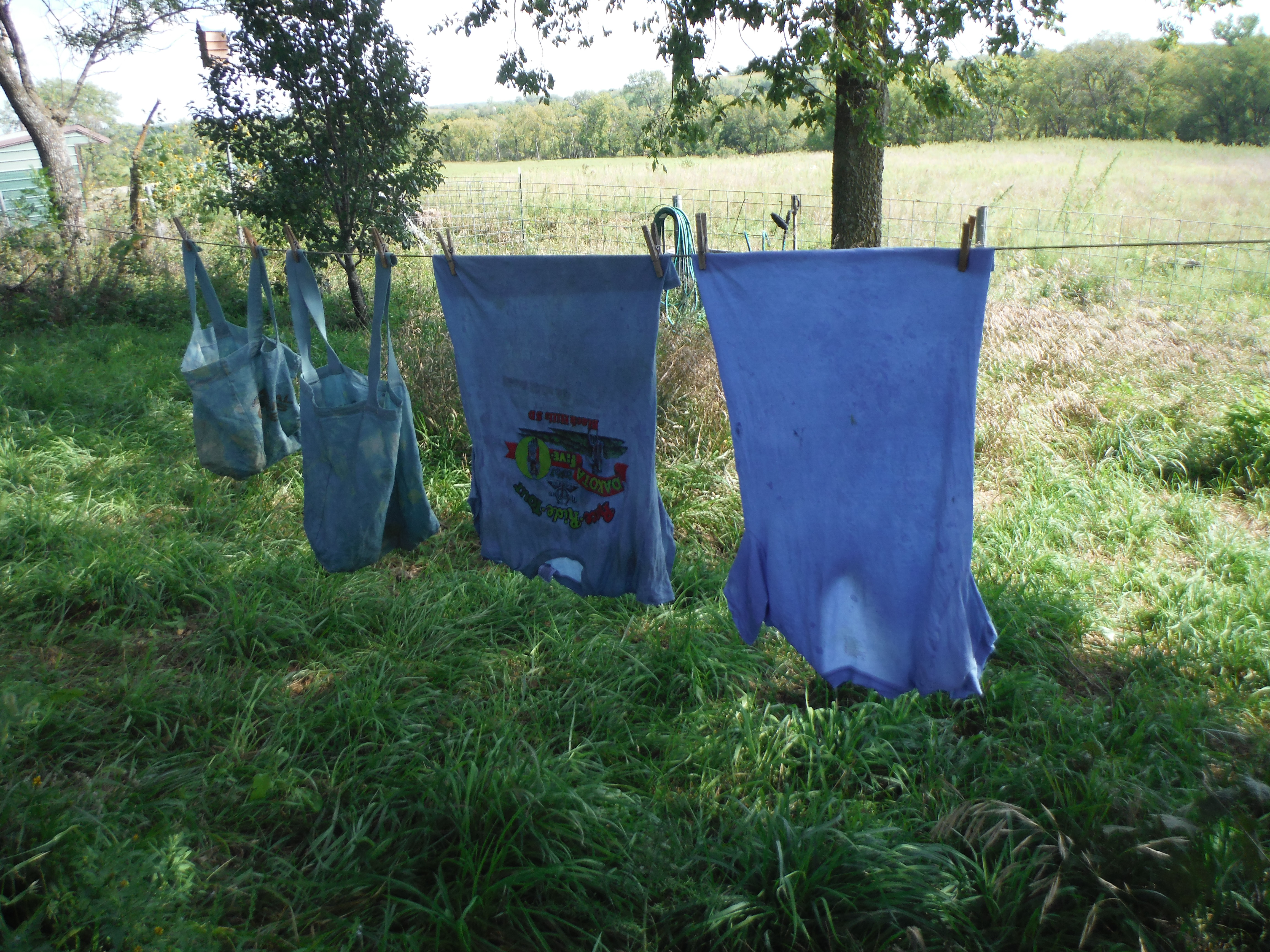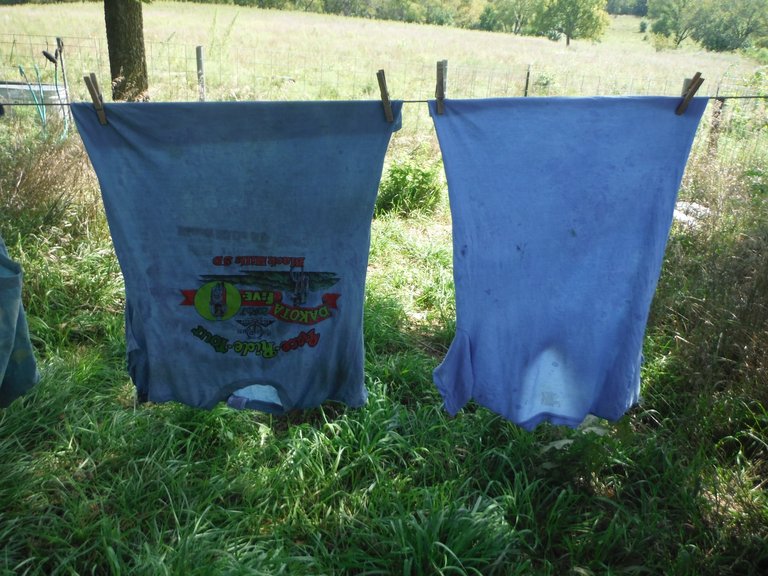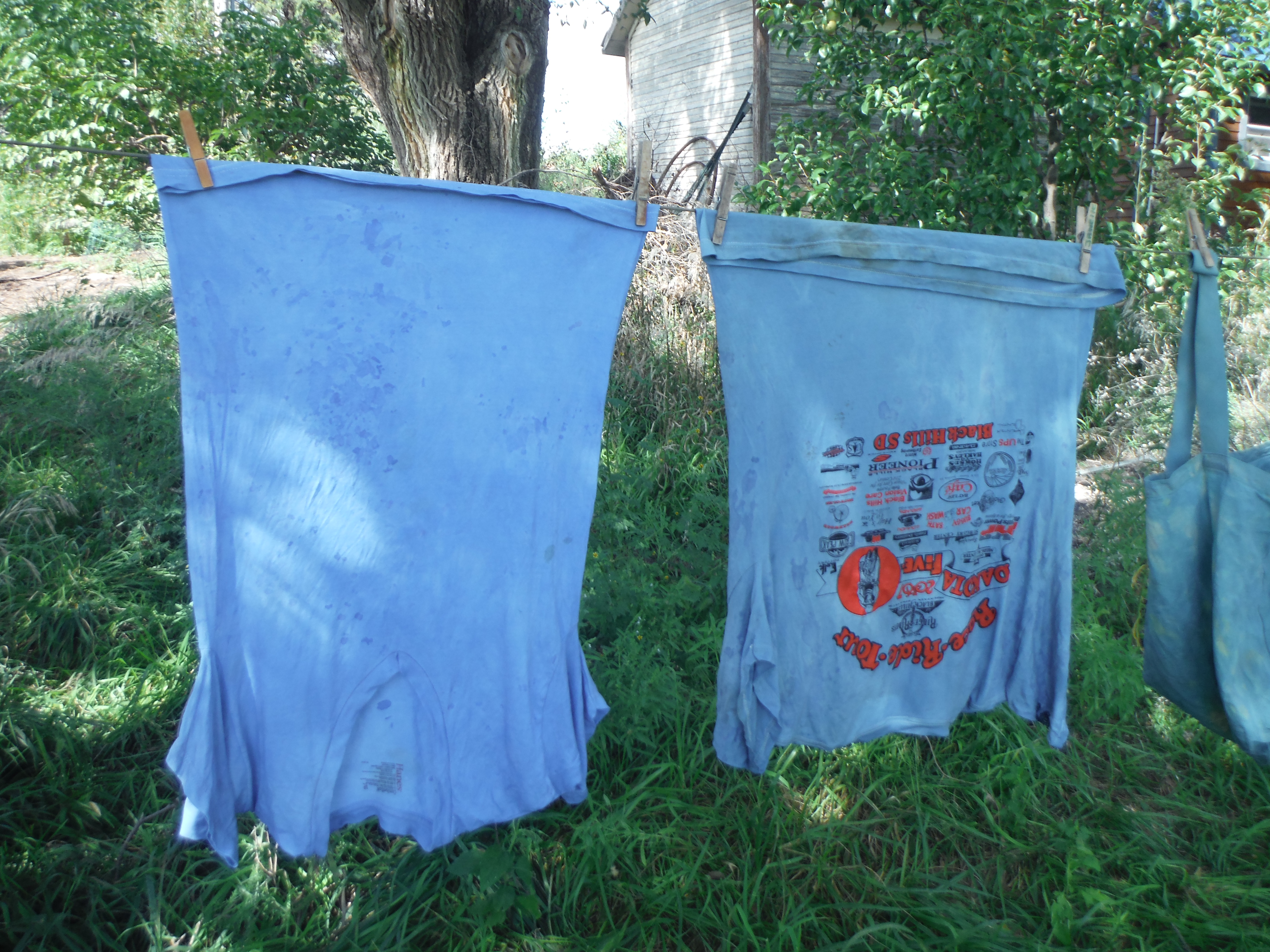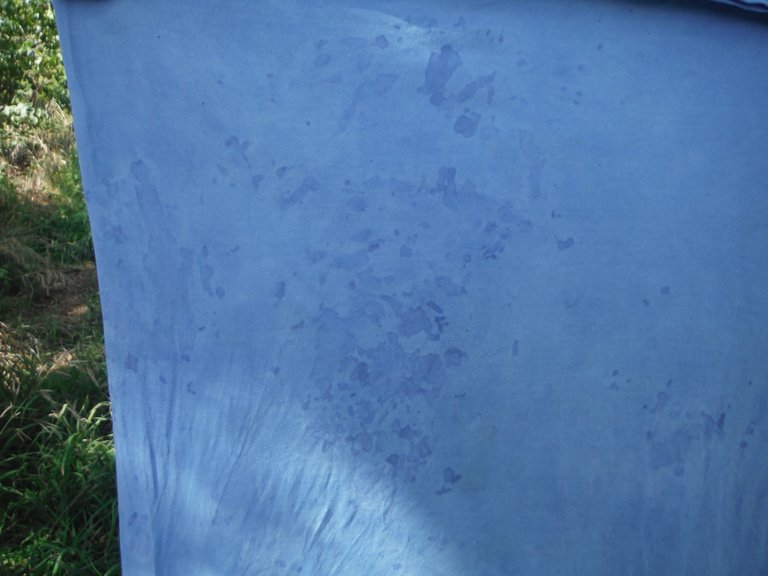Working with Japanese Indigo (Polygonum tinctorium)
Here are my photos of the homegrown Japanese indigo plants in my garden.
It's a very floppy plant that has a stem that looks like segments growing up to a summer flowerhead, that also has many little flowers whorling around the stem almost like a snapdragon. The seeds are TINY so it makes sense that the individual flowers are tiny, as well.
Although I have collected seeds from previous years, these amazing plants have reseeded themselves (and that was after last winter's negative 20 degrees Fahrenheit for a week in February 2020, which was miserable). I was of the understanding that this plant did not grow back with their seeds in northeast Kansas. I was pleasantly surprised, although I am still collecting seeds and allowing some of the seedheads to remain to hopefully grown this summer.
Starting with tap water and MANY de-stalked Japanese indigo leaves, I slowly brought the water up to 160 degrees Fahrenheit.
The pot I used was one that will be exclusively used for dyeing, which is an essential practice to follow.
Then I strained the leaves from the dye pot and added ammonia (this needs to be done outside) at the rate of 1 fluid ounce per gallon of dye liquid to make the vat alkaline.
The goal is to maintain a pH of 9 - 11 throughout the process. I had pH test paper that I used, although I couldn't tell because it didn't seem to change color much. :-)
Then I poured the liquid back and forth between two containers for 5 minutes to add as much air as possible to the dye pot.
The liquid will turn blue and a bit foamy. Allow the dye pot to cool some after the 5 minutes of mixing between pots. The goal here is to maintain a temperature of 110 - 130 degrees Fahrenheit. (I had a camp stove under the pot outside to maintain the temperature. I didn't want to bring the dye pot inside and make a mess.)
Next the air must be removed (AKA "reduced") by adding sodium hydrosulfite (which you can by as Rit Color Remover from the grocery or craft store) at a rate of 1/2 teaspoon of dye liquid. It might take another hours to reduce, you will see the vat change color like the picture above. There will be a purple-ish film on top but then you will see a more green color below the surface. This is a great sign you are on the right track!
Pre-wet any fabric or yarn you will be adding to the pot so the fabric will receive all the dye available. Lower the fabric SLOWLY as to NOT add any extra air bubbles to the pot. Air bubbles will give you less blue dye in the end and you will have to add more Rit Color Remover and wait.
In the photo above, I am just showing an old linen top that lost most of its color over the years. I wanted to see if I could make it look better than it did in the photo.
Here I have some canvas grocery bags that I would see how they took to the dyebath. It looks more green than blue, which is completely normal. The transformation happens when you SLOWLY remove the item from the dye and shake it a few times. The air comes in contact with the dye in the fabric and turns from green to BLUE! It's AMAZING!!
If you are looking for more of a consistent color throughout, this may not be the dye for you. I like the almost tie-dye effect of the end result. One could do an "over-dye" by going through all these steps a second or third time to see if you get a darker and more consistent color. I was happy with the results and will be doing this again hopefully this summer.
What I will say about this dye a few years later is that it's staying power isn't with cottons, at least not with the process used above. Most of the dye is gone although I can see a little on our grocery bags.
On the linen top, while the dye has faded a little I am still happy with the results. I do hear that silk holds the dye well but then I think silk receives most if not all dyes the best out of all fibers.
I hope you enjoyed this post!! Have a great day.
~all photos taken by me

